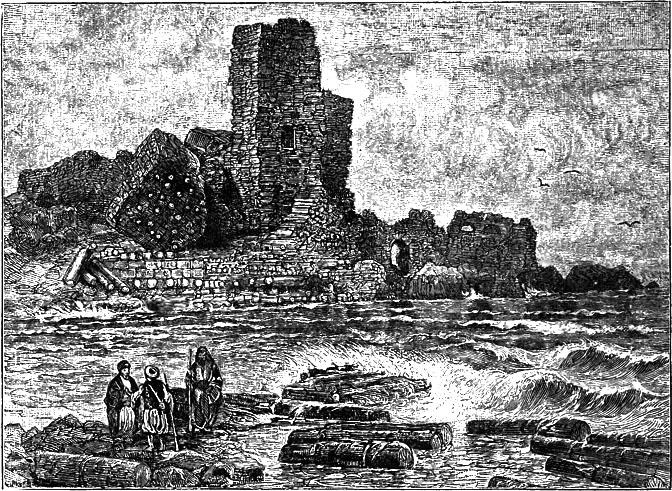The Future of Bible Study Is Here.
 Loading…
Loading…
You have not started any reading plans.
- More »
Sign in or register for a free account to set your preferred Bible and rate books.
Caesarea—(Palestinae), a city on the shore of the Mediterranean, on the great road from Tyre to Egypt, about 70 miles northwest of Jerusalem, at the northern extremity of the plain of Sharon. It was built by Herod the Great (b.c. 10), who named it after Caesar Augustus, hence called Caesarea Sebaste (Gr. Sebastos = “Augustus”), on the site of an old town called “Strato’s Tower.” It was the capital of the Roman province of Judaea, the seat of the governors or procurators, and the headquarters of the Roman troops. It was the great Gentile city of Palestine, with a spacious artificial harbour. It was adorned with many buildings of great splendour, after the manner of the Roman cities of the West. Here Cornelius the centurion was converted through the instrumentality of Peter (Acts 10:1, 24), and thus for the first time the door of faith was opened to the Gentiles. Philip the evangelist resided here with his four daughters (21:8). From this place Saul sailed for his native Tarsus when forced to flee from Jerusalem (9:30), and here he landed when returning from his second missionary journey (18:22). He remained as a prisoner here for two years before his voyage to Rome (Acts 24:27; 25:1, 4, 6, 13). Here on a “set day,” when games were celebrated in the theatre in honour of the emperor Claudius, Herod Agrippa I, appeared among the people in great pomp, and in the midst of the idolatrous homage paid to him was suddenly smitten by an angel, and carried out a dying man. He was “eaten of worms” (12:19–23), thus perishing by the same loathsome disease as his granfather, Herod the Great. It still retains its ancient name Kaiseriyeh, but is now desolate. “The present inhabitants of the ruins are snakes, scorpions, lizards, wild boars, and jackals.” It is described as the most desolate city of all Palestine.
Caesarea Philippi, a city on the north-east of the marshy plain of El-Hûleh, 120 miles north of Jerusalem, and 20 miles north of the Sea of Galilee, at the “upper source” of the Jordan, and near the base of Mount Hermon. It is mentioned in Matt. 16:13 and Mark 8:27 as the northern limit of our Lord’s public ministry. According to some its original name was Baal-gad (Josh. 11:17) or Baal-hermon (Judg. 3:3; 1 Chr. 5:23), when it was a Canaanite sanctuary of Baal. It was afterwards called Panium or Paneas, from a deep cavern full of water near the town. This name was given to the cavern by the Greeks of the Macedonian kingdom of Antioch because of its likeness to the grottoes of Greece, which were always associated with the worship of their god Pan. Its modern name is Banias. Here Herod built a temple which he dedicated to Augustus Cæsar. This town was afterwards enlarged and embellished by Herod Philip, the tetrarch of Trachonitis, of whose territory it formed a part, and was called by him Cæsarea Philippi, partly after his own name and partly after that of the emperor Tiberias Cæsar. It is thus distinguished from the Cæsarea of Palestine. (See Jordan.)

MOLE AND HARBOUR OF CÆSAREA (PALESTINÆ).

|
About Easton’s Bible DictionaryEaston’s Bible Dictionary provides informative explanations of histories, people and customs of the Bible. An excellent and readily understandable source of information for the student and layperson. One of Matthew George Easton’s most significant literary achievements. |
| Support Info | eastons |